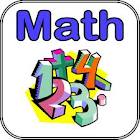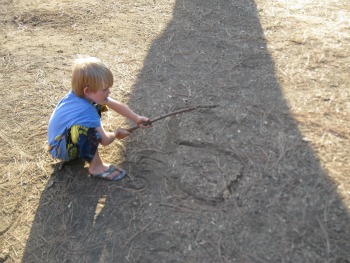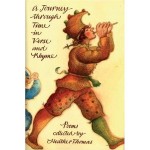 A few months ago, I wrote here about my plan this year for Dominic’s math education. He is 5 and a late bloomer. He wasn’t ready for a structured math curriculum, so I put together a creative literature-based math plan.
A few months ago, I wrote here about my plan this year for Dominic’s math education. He is 5 and a late bloomer. He wasn’t ready for a structured math curriculum, so I put together a creative literature-based math plan.
The plan is working beautifully for him. He is thriving and enjoys every math lesson. No exaggeration. We especially love the Stuart Murphy Math Start books, which are a treat and beautifully illustrated.
I’ve added a few other activities to supplement the plan.
First, Dominic is creating his own little illustrated math book. Dominic isn’t wild about drawing or coloring, but recently he’s warming to it, and he’s putting in a reasonable effort creating his math book. Here’s how we do it: Dominic has a blank sketch book. We have a “number of the week” each week; he practices the number on kindergarten penmanship paper early in the week. On Thursday or Friday he writes the number in his sketch book and illustrates it with a corresponding number of objects. So if the number of the week is “4”, he will write a four and draw four objects. At the end of the year he will have his own illustrated counting book! Fun!
We are also creating a collection of clay numbers made from self-drying clay. (Crayola makes an inexpensive self-drying clay that works great, but you can also make your own.) Each week Dominic molds the number of the week and we let it dry. I had planned to have him paint the numbers but so far he hasn’t been interested. They would look so awesome painted, but I won’t push!!
This kind of tactile learning is great for all small kids, but it seems especially suited for Dominic. Sometimes I just have him draw the numbers in the air or we “run” the numbers on the grass. It sounds strange, but somehow this experience of “feeling” the numbers clicks with some small kids. Dominic really likes numbers now. I have found him writing his numbers in the dirt with a stick and on the cement with chalk.

 Lastly, I have been reading Dominic fun little math poems from a section of the book A Journey Through Time in Verse and Rhyme. The book provides a huge collection of poems on different learning topics — math, grammar, history, seasons, etc. Warning: there are a few goofy new-agey type poems. There’s a whole section on “The Elements and Nature Spirits”. I just ignore the strange stuff. It’s a unique collection and has been a great addition to my bookshelf. Here’s a download of our favorites from the collection: MATH POEMS for LITTLE ONES.
Lastly, I have been reading Dominic fun little math poems from a section of the book A Journey Through Time in Verse and Rhyme. The book provides a huge collection of poems on different learning topics — math, grammar, history, seasons, etc. Warning: there are a few goofy new-agey type poems. There’s a whole section on “The Elements and Nature Spirits”. I just ignore the strange stuff. It’s a unique collection and has been a great addition to my bookshelf. Here’s a download of our favorites from the collection: MATH POEMS for LITTLE ONES.
I know: Math isn’t all about poems, crafts, and fun. It requires hard work to acquire the knowledge necessary to succeed in higher math. In math, as in all subjects, I expect the children to strive for excellence and to show their best work. However, I personally also strive to meet the needs of each of my children at their current level. I hope I’m doing this with Dominic, my dear boy!
Happy counting!
Anna is a tactile learner as well. She wanted nothing to do with “ABC’s” or “123’s” until I found something that suited her. She did well with a program called “Handwriting Without Tears”. She learned her alphabet using clay, using her body and putting the shape of the letter together like a puzzle. After 1 1/2 yrs of that she now enjoys learning in a traditional way and you would never know that she was “behind” her peers.